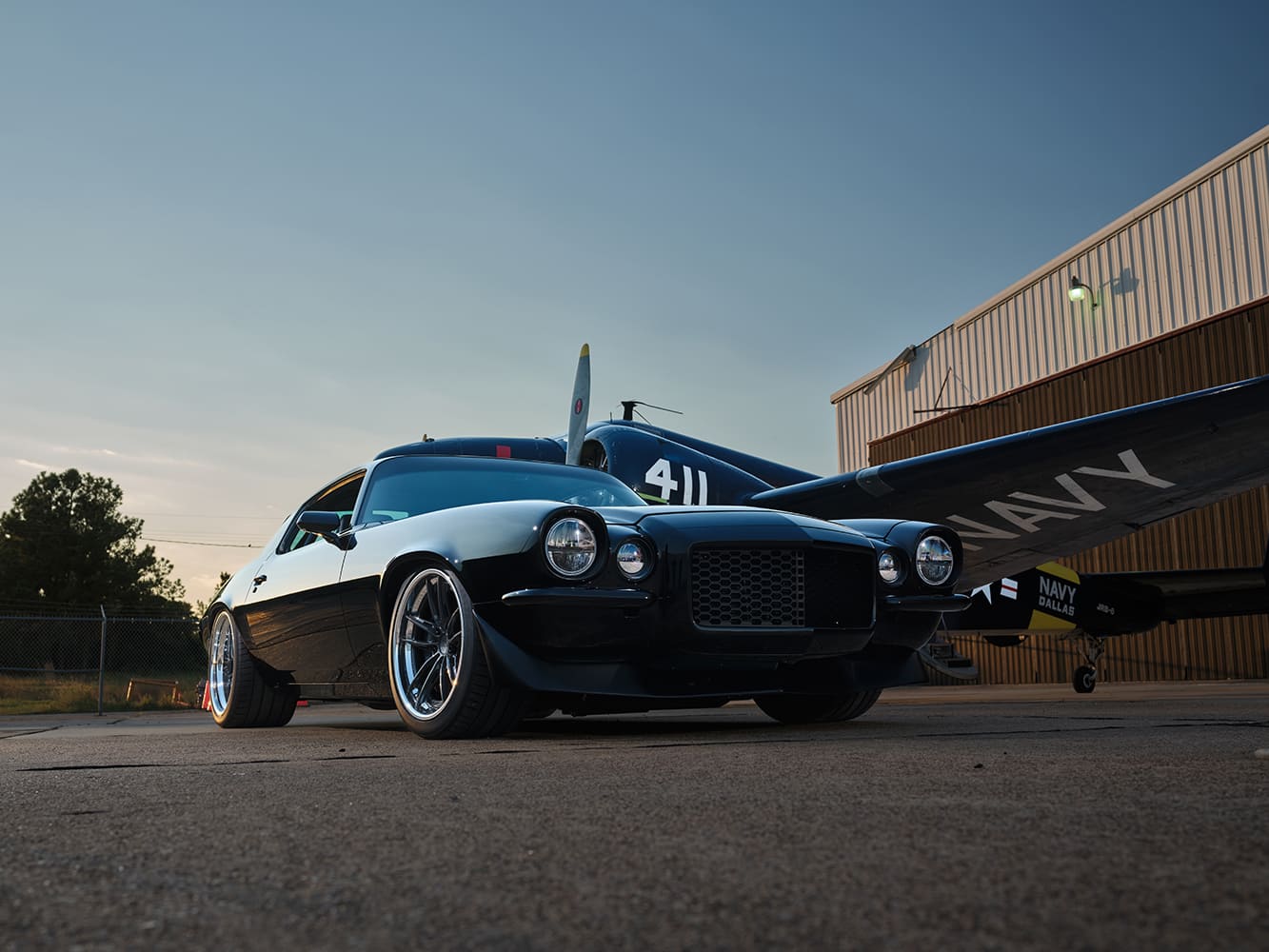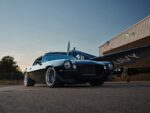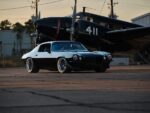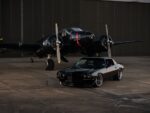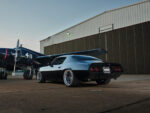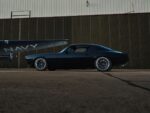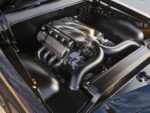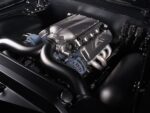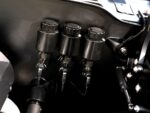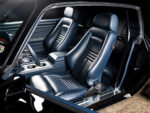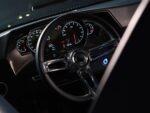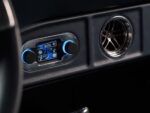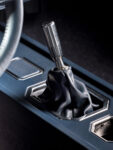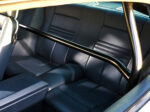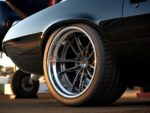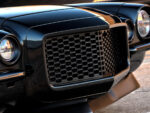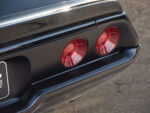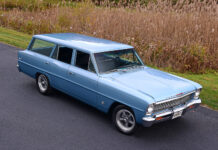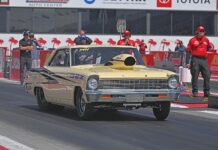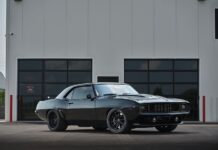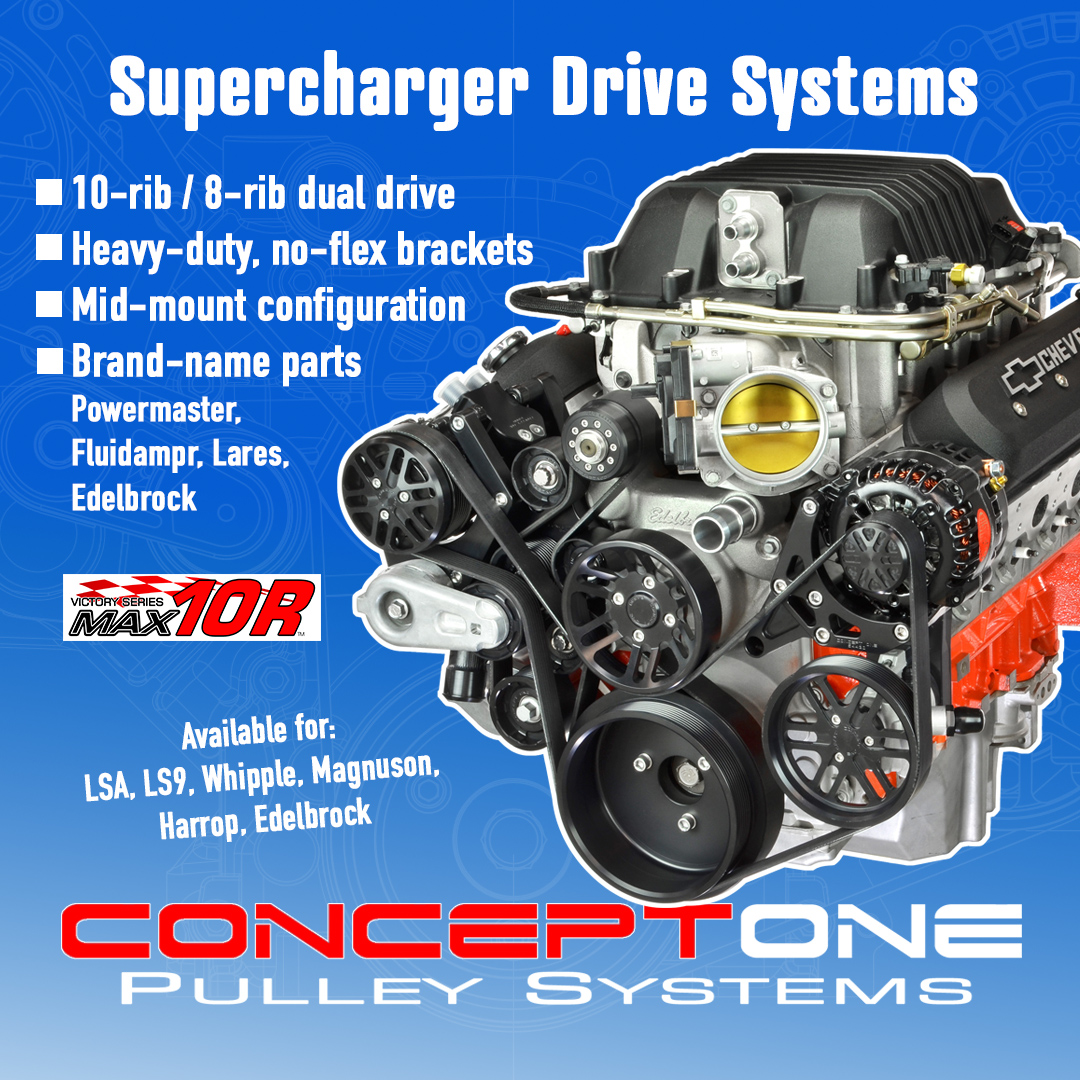By Nick Licata – Images by NotStock Photography
Travis Alford has pretty much always been a Camaro guy. Being his first car was a 1980 version, that pretty much planted the second-gen seed. But the ’80s Camaros’ performance left a lot to be desired. During that time emissions standards had reduced engine power, choaking the 350 engines to just about 190 hp—and that was on a good day. By 1980 the Camaro had also gained weight compared to the early second-gens (1970-73). Add in vague steering and poor braking performance, coupled with the aforementioned reduction in power, and late second-gens were basically slugs—not bad-looking slugs, but slugs none the less.
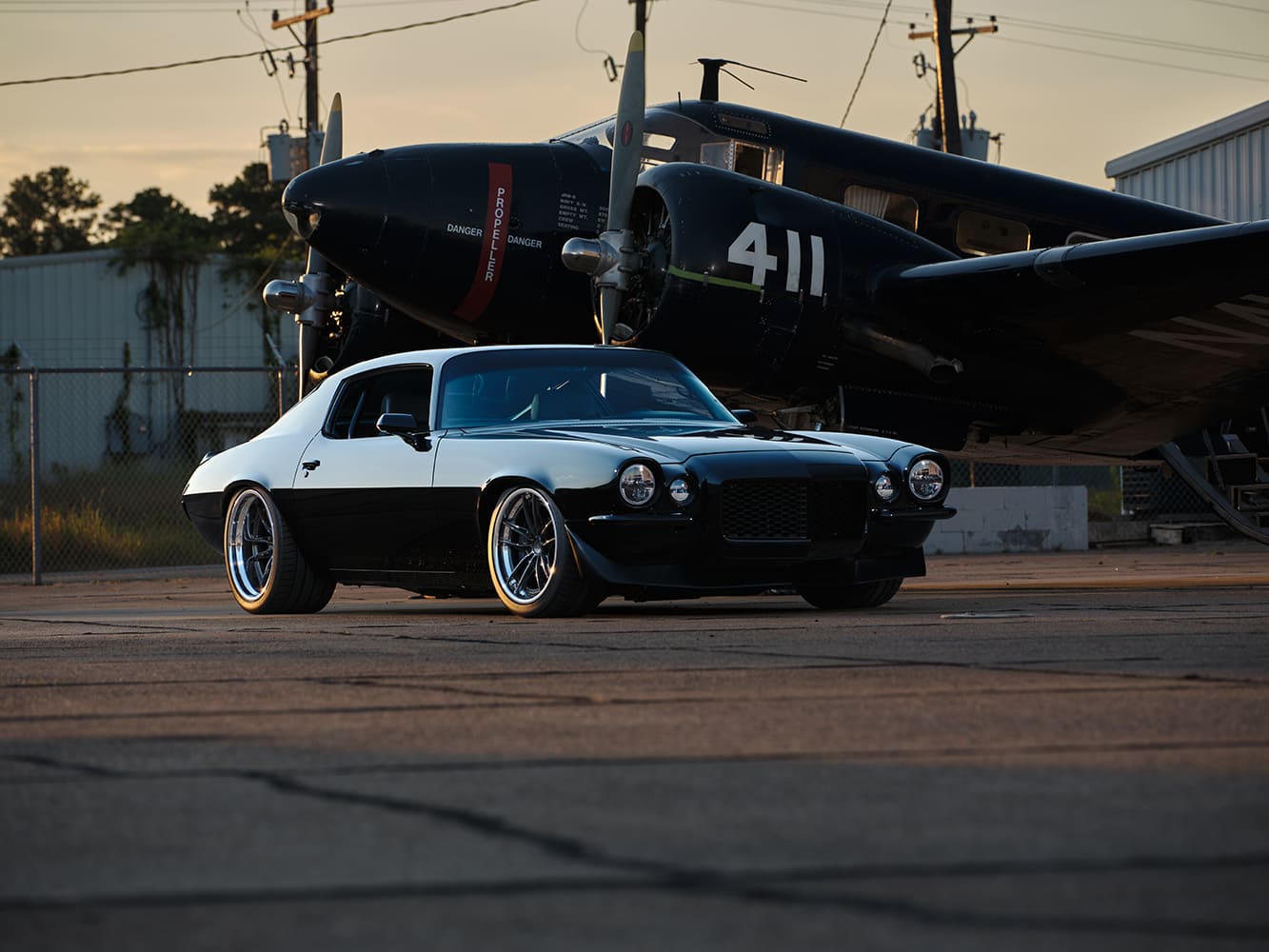
Years later, Travis wanted to revisit the Camaro world, but this time it had to be a 1970-73 model. “My buddy, Brian Vastine found a clean, one-owner ’70 Camaro in California, and since my wife has family in the area, we packed up and loaded my two daughters in the car and made the trip from Texas to California for a family visit and to pick up the car. It was great to see some family we don’t get to visit that often, but coming home with my dream car made it even better,” Travis says.
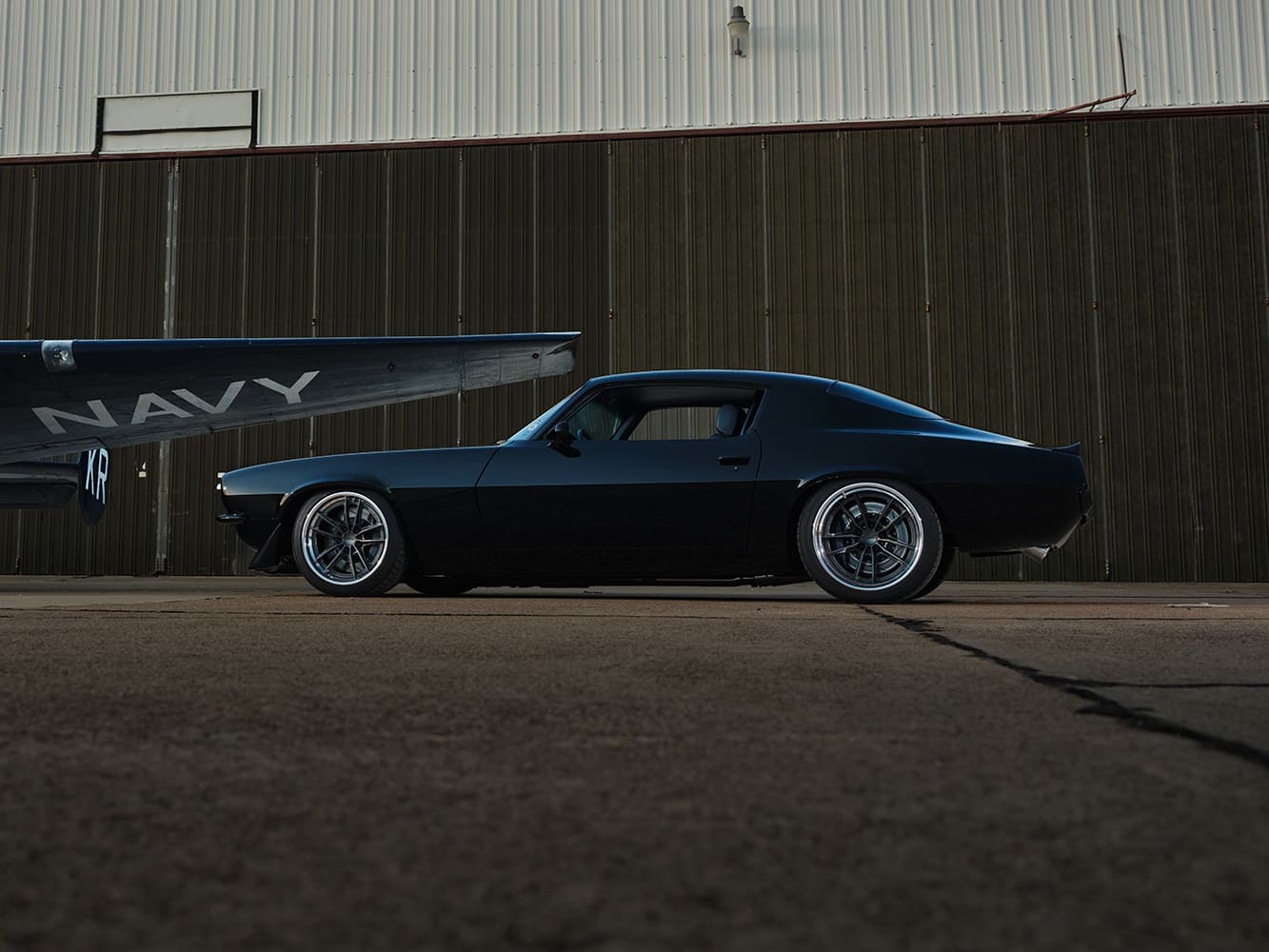
Within two days of getting the Camaro home, Travis had the car stripped and the body blasted. “I installed the rear suspension and tubs myself but stalled on the firewall and realized I needed some help,” Travis confesses. “So, I took the car to Tim Palazzolo at GAP Industries in Hockley, Texas, to take the reins and move forward with the build. I saw what Palazzolo and his team did with a 1971 Camaro called ‘Enigma,’ which to me is the nicest second-gen I’d ever seen, so I knew my car was in the right hands.”

Travis and Palazzolo put together a plan to build his Camaro to match the build caliber of Enigma, while incorporating some of the design elements Travis also had in mind, marking the beginning of a seven-year journey that would result in a powerful award-winning showpiece.
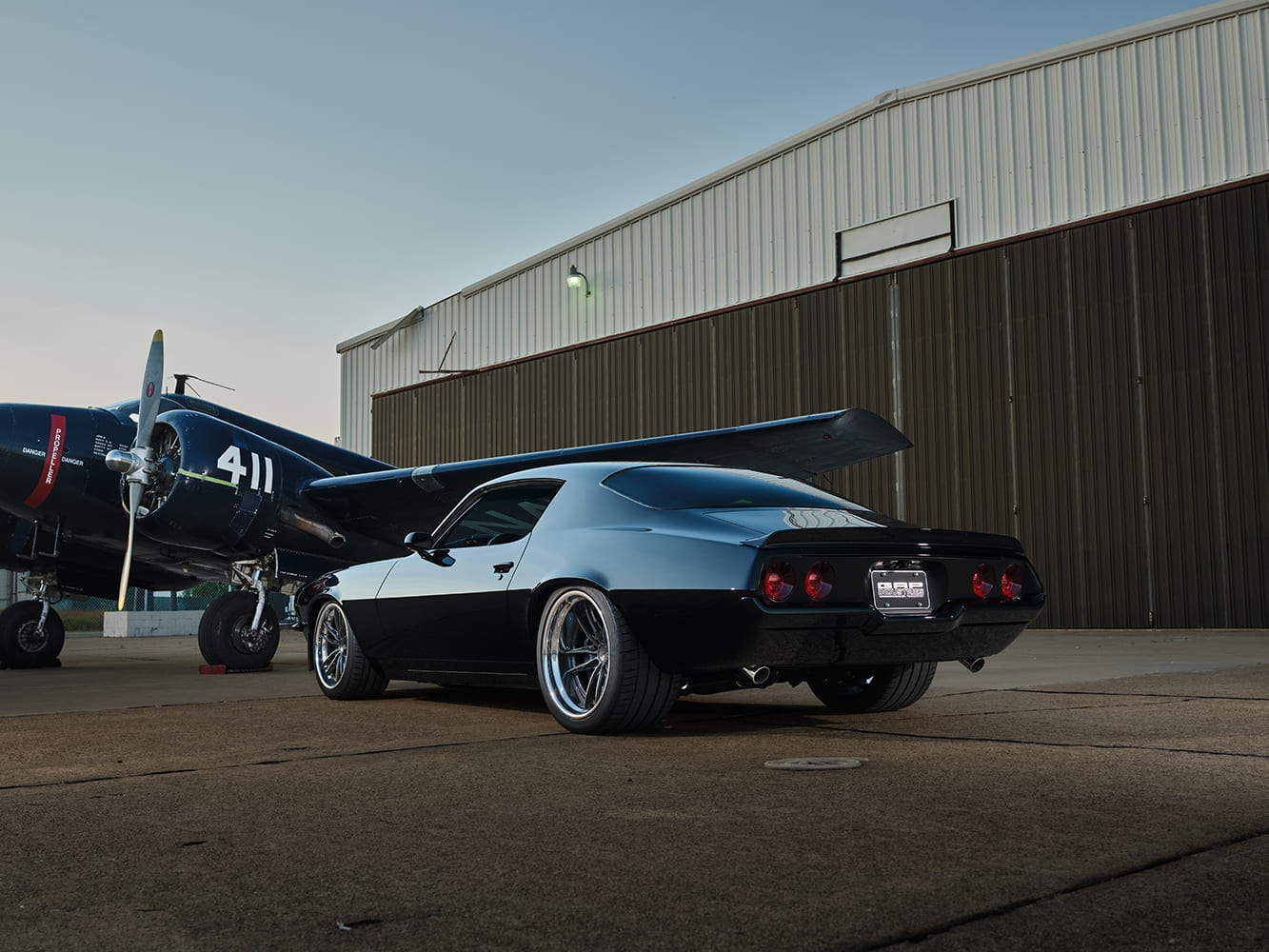
At the heart of Travis’ Camaro is an LS3 built by Dedicated Motorsports in Granbury, Texas. The engine was punched to 416 ci and boasts a compression ratio of 11.3:1, ensuring both power and streetabilty. The rotating assembly includes a Molnar crankshaft, 6.125-inch Molnar Power Adder rods, and Wiseco pistons, creating a solid high-performance foundation.
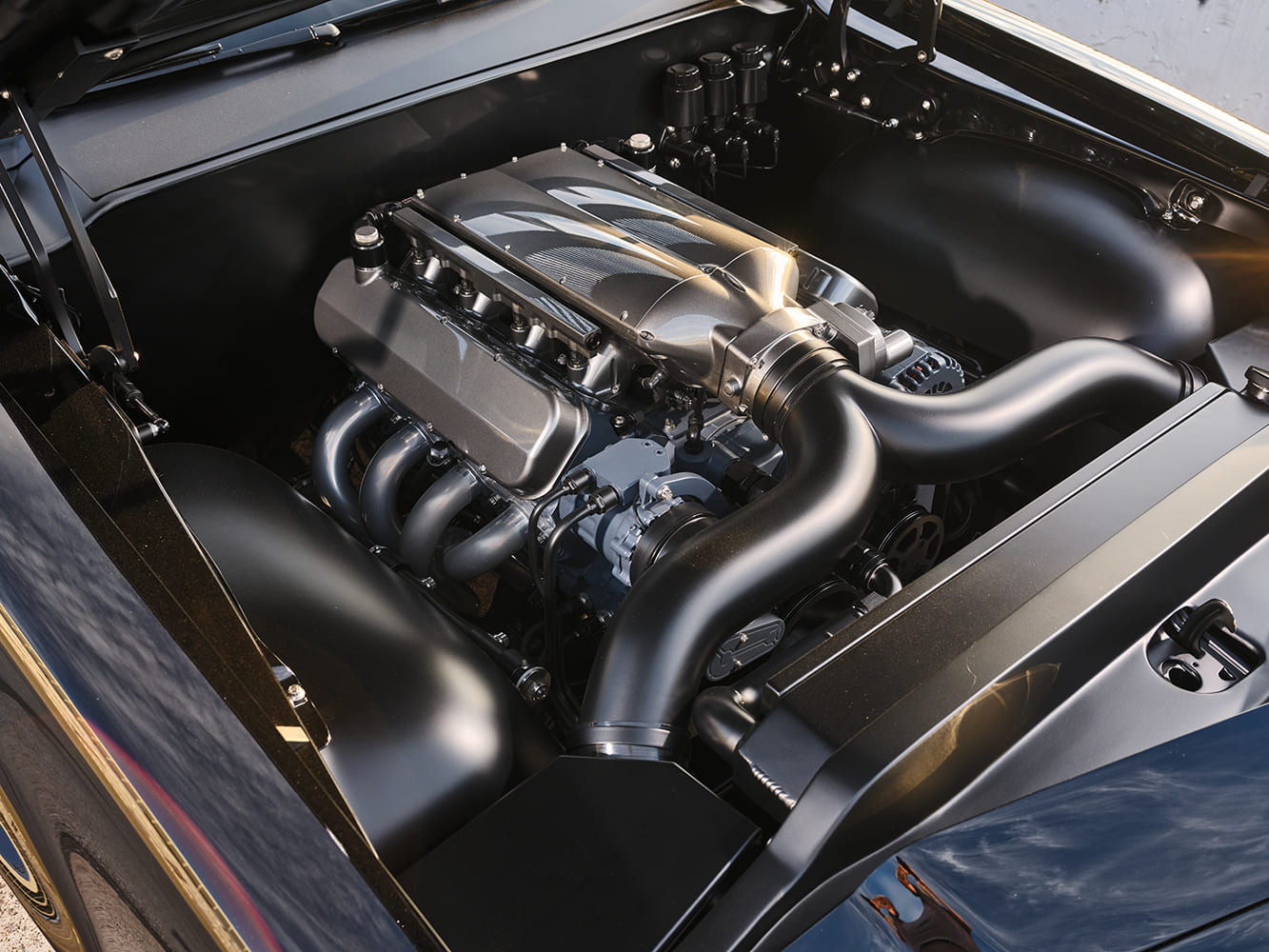
A custom camshaft paired with Frankenstein F310H aluminum cylinder heads increase airflow and combustion efficiency. The Frankenstein Low Pro Billet intake contributes to improved horsepower and torque while the GM fuel injection system ensures ample fuel delivery. Frankenstein billet valve covers and an Eddie Motorsports accessory drive system add some flair to the sano-looking engine bay. Spent fuel exits through Detroit Speed 1 7/8-inch headers, a custom 3-inch exhaust system, and MagnaFlow mufflers, giving the Camaro an aggressive exhaust note. After all is said and done, the engine is good for a respectable 532 hp.
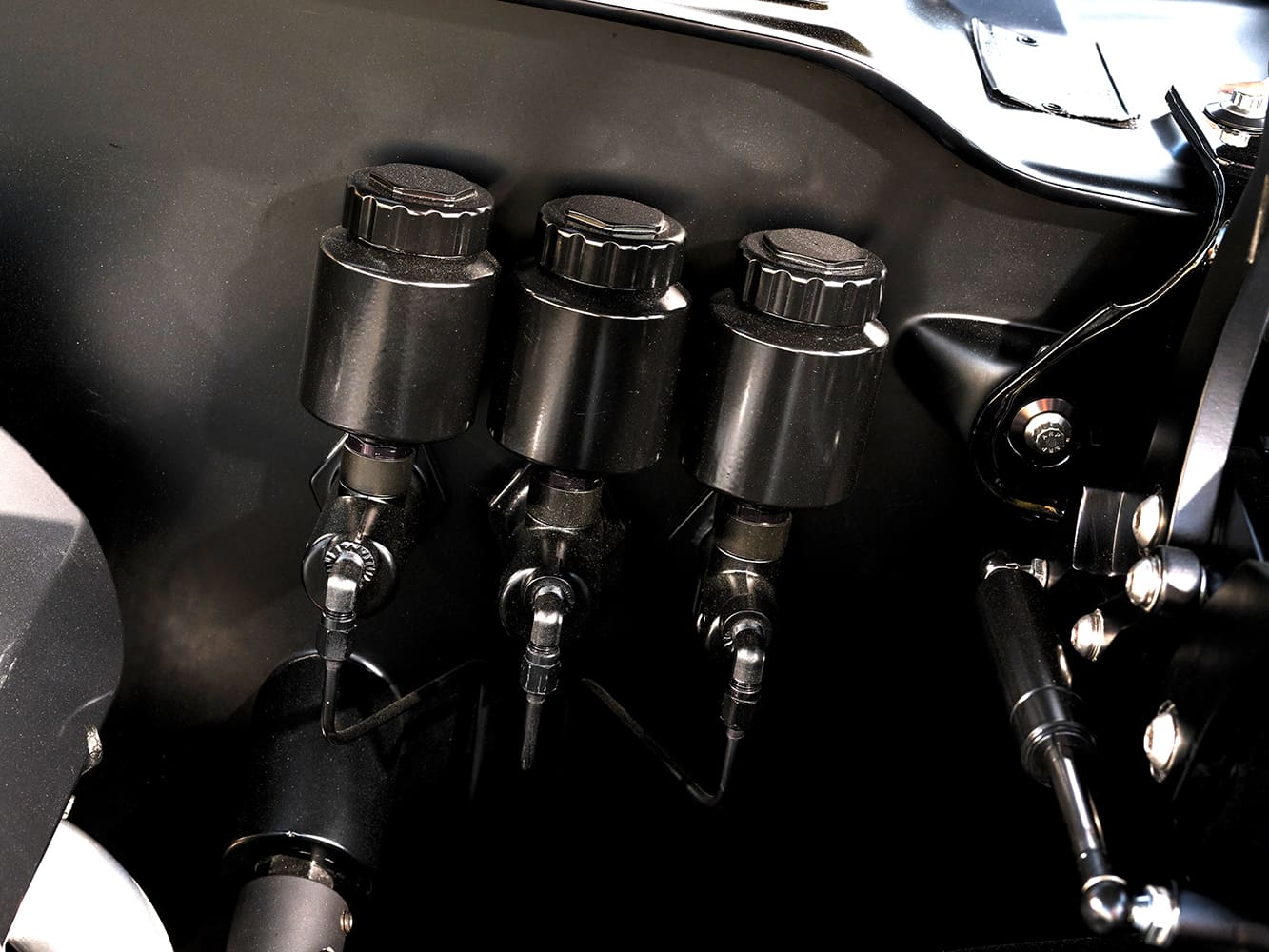
Backing the engine is a GM TR-6060 six-speed manual trans coupled with a McLeod twin-disc clutch for neck-snapping launches and crisp gear changes. A Ford 9-inch armed with 3.73 gears, an Eaton Truetrac posi unit, and Strange 31-spline readily accepts the LS’s grunt without breaking a sweat.
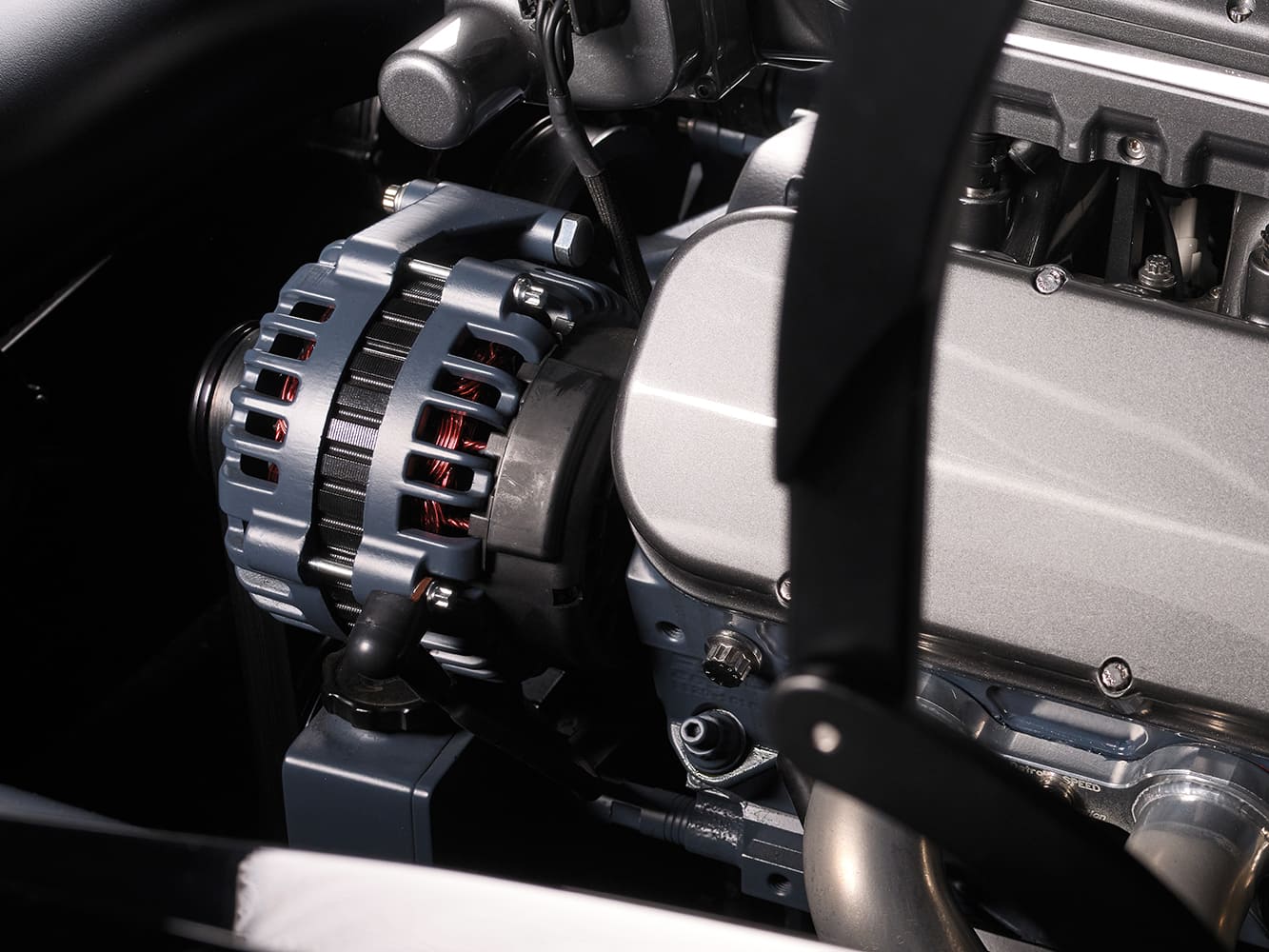
The Camaro’s stock suspension bits were tossed in the scrap pile, making room for major upgrades that include a Detroit Speed hydroformed subframe up front and a QUADRALink system out back. JRi double-adjustable coilover shocks reside on all four corners, while a Detroit Speed rack-and-pinion steering system assures quick and accurate lateral movement. The fresh underpinnings create an excellent combination of superb ride quality and stellar performance.
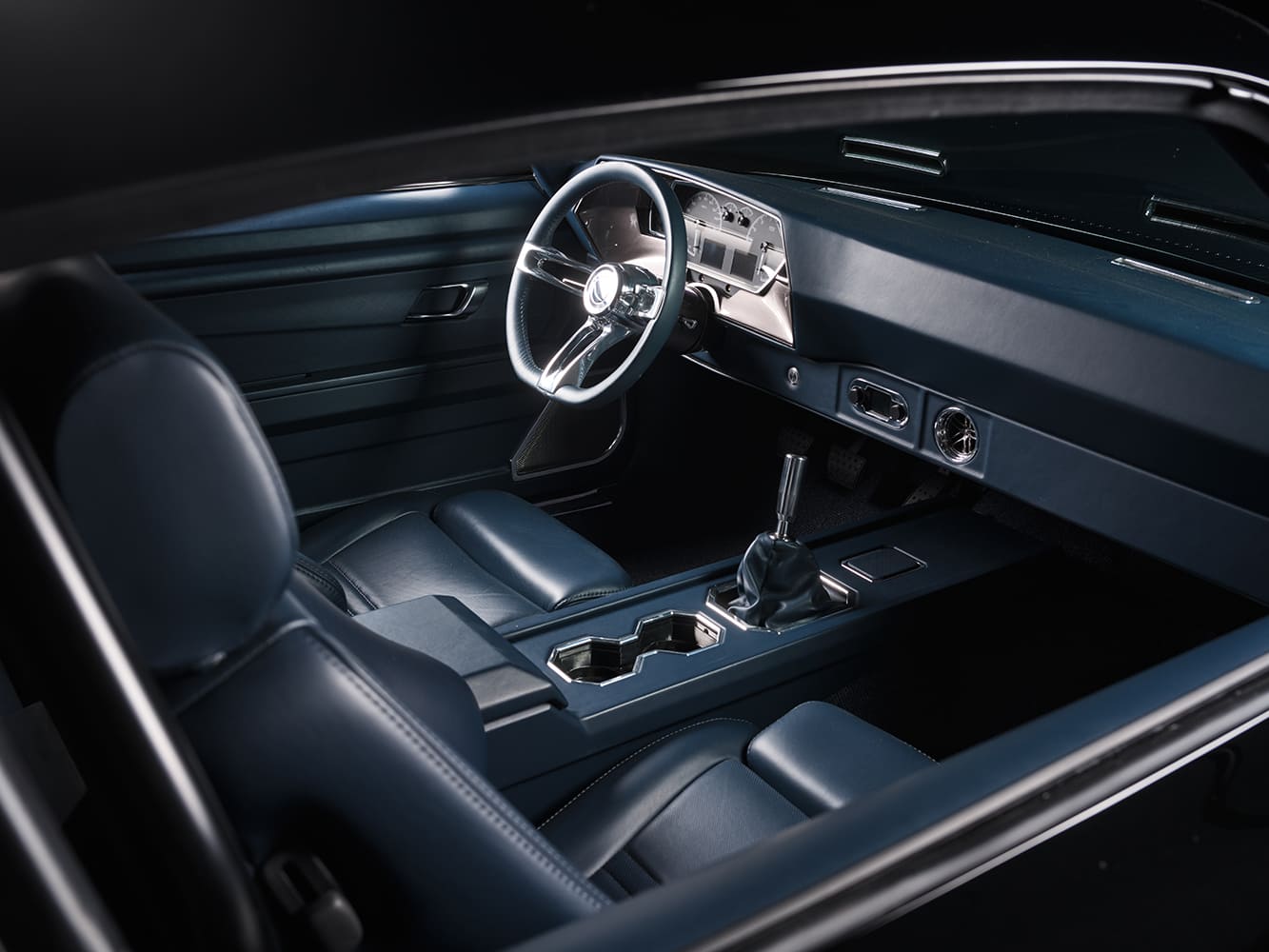
StopTech 14-inch rotors with six-piston calipers up front and four-piston calipers out back provide exceptional braking while a Wilwood master cylinder and pedal assembly ensure smooth stopping power. Those massive brakes are perched behind a set of Forgeline AL307 wheels wrapped in Michelin Pilot Sport rubber and comply with the Camaro’s aggressively low stance while delivering the necessary hard-cornering grip.
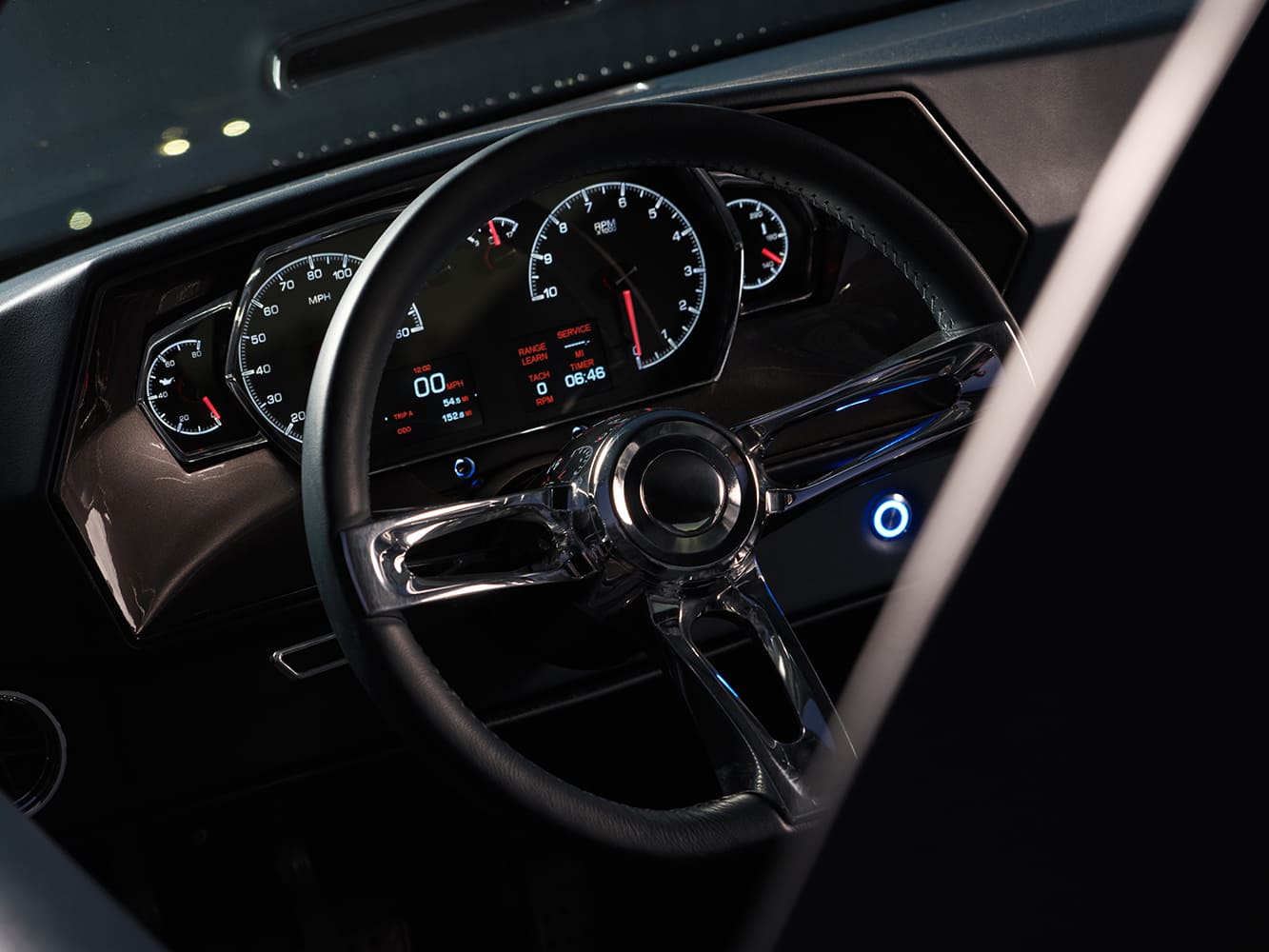
The interior is a stunning fusion of modern performance meets classic muscle car aesthetics. Cato’s Custom Upholstery in Salt Lake City, Utah, handled the upholstery work wrapping the cabin in rich blue leather. The custom door panels, center console, and dash take the Camaro’s performance scene up a notch. Recaro Specialists Seats offer an excellent combination of comfort and support, while a Schroth harness gives Travis a confident layer of safety as he grips a Sparc Industries steering wheel mounted onto an Ididit column. A custom four-point chromoly rollcage built by GAP, provides additional chassis rigidity and a safer cockpit.
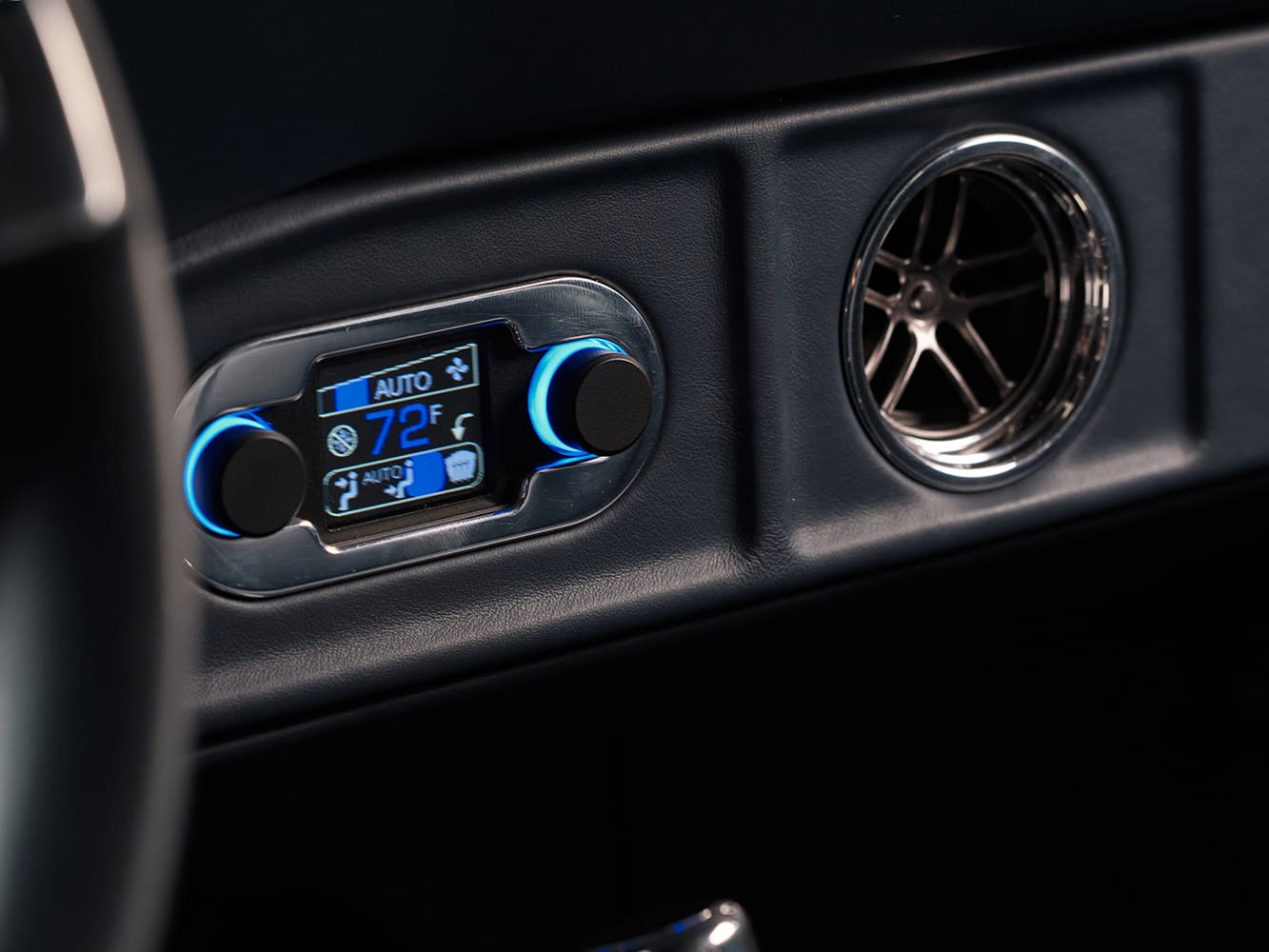
The Dakota Digital gauge cluster keeps track of engine vitals while an American Autowire harness integrates all electrical components. Climate control comes by way of a Vintage Air A/C system exhaling through Restomod Air vents.
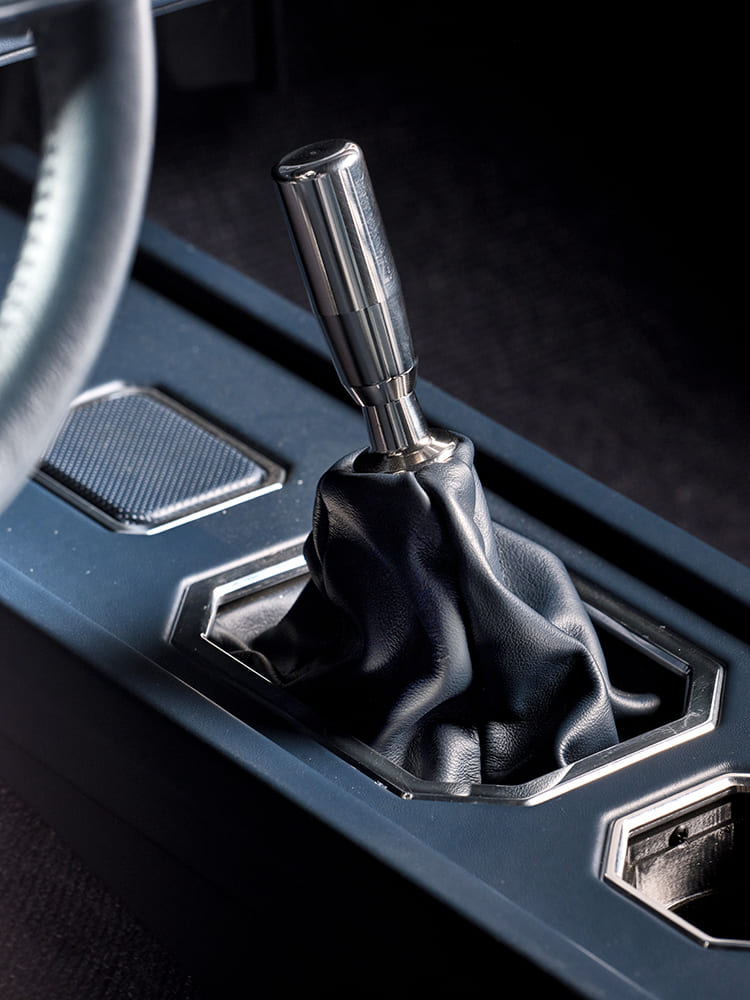
The soundtrack is provided by a Pioneer head unit backed up by Pioneer amps, speaker, and trunk-mounted subwoofer, all installed by GAP. It offers a high-quality auditory experience, making those long road trips seem just a little bit shorter and a lot more fun.
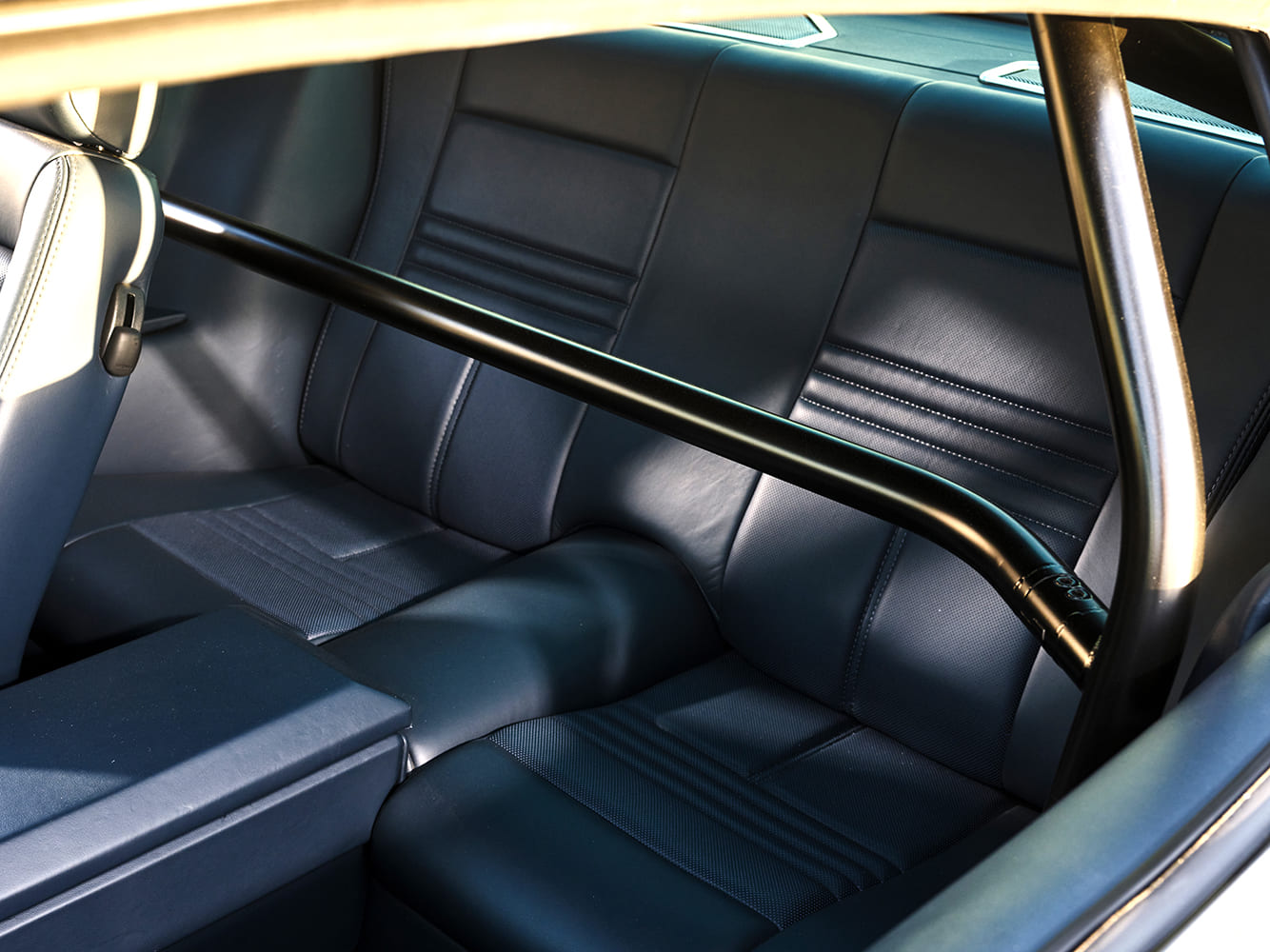
A car of this caliber deserves flawless bodywork and paint, and Brian Vastine of Vastine’s Paint Garage in Royse City, Texas, smoothed the sheetmetal and set the gaps prior to spraying on a deep, rich layer of Spies Hecker Black pigment that accentuates the Camaro’s aggressive lines.
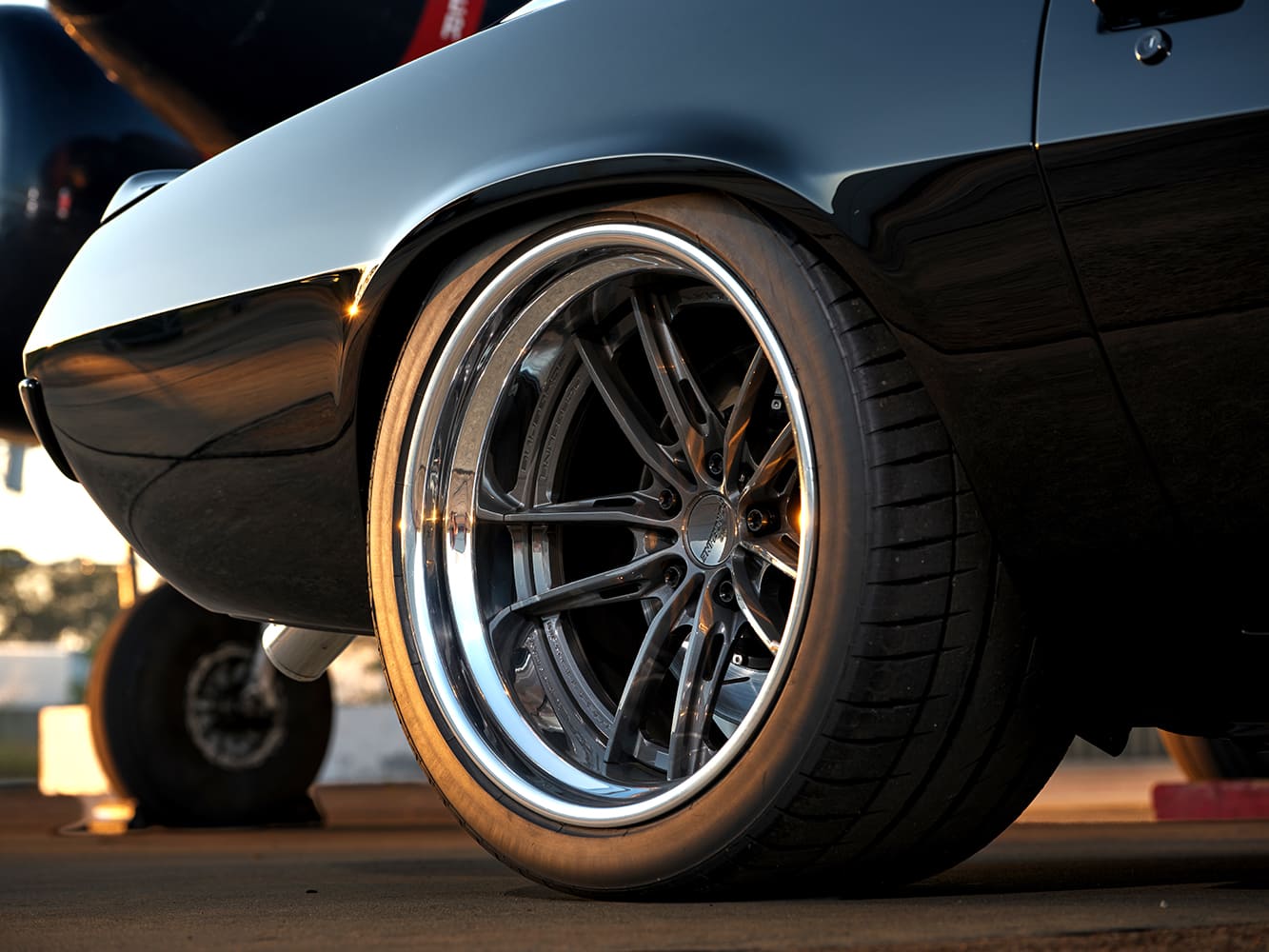
The custom Alumicraft grille, tucked and smoothed bumpers, and flush-mounted glass provide a sleeker and more modern look. Truck-Lite headlights and Anvil Auto taillights further enhance visibility and style, while the IntekOtto side mirrors add a touch of sophistication. Ogden Chrome in Ogden, Utah, polished the bright bits for a flawless finish.
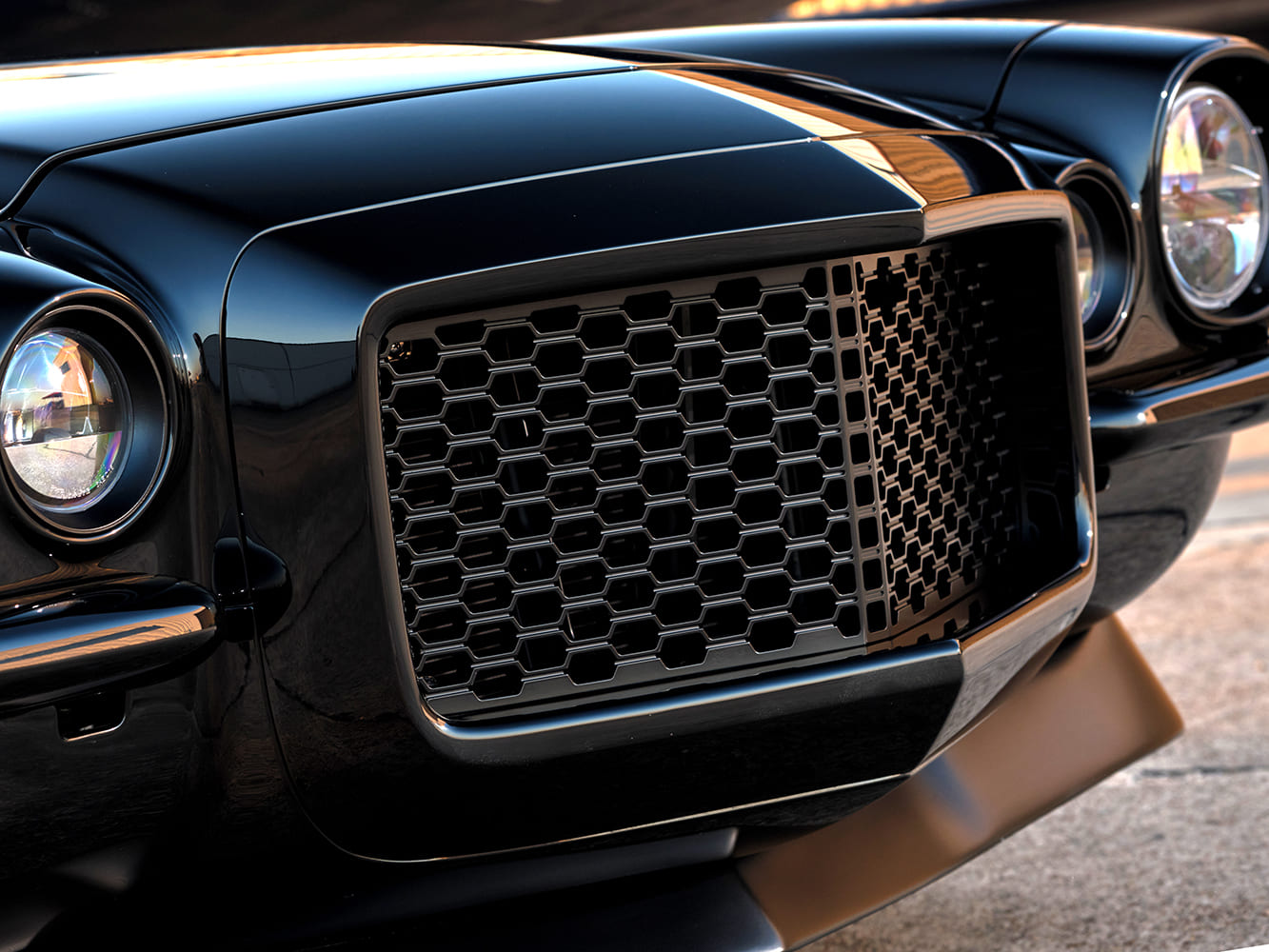
After seven years of meticulous craftsmanship, this second-gen Camaro is light-years away from its humble California beginnings. “This Camaro is absolutely incredible,” Travis excitedly says. “I wanted my next Camaro to be everything my first one was not, and Tim Palazzolo and the team at GAP did just that. It’s got plenty of power, reliability, and looks incredible.”
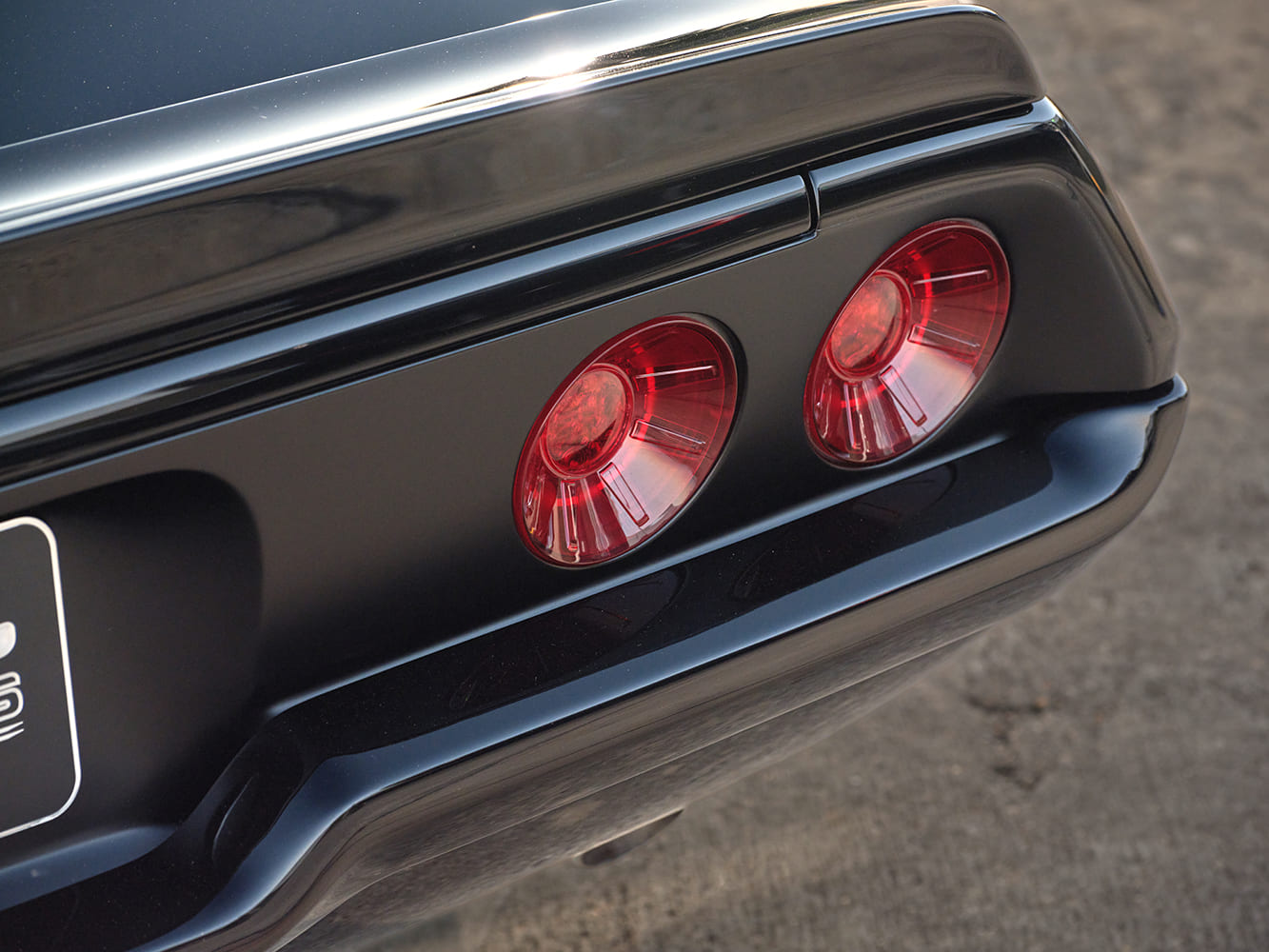
The car debuted at Goodguys Columbus in 2024 and took home Muscle Machine of the Year in Fort Worth, Texas. But this car is not just another pretty face, as Travis isn’t shy when it comes to tearing up a set of Pilot Sports because that’s what these cars are meant to do, right? ACP
Check out this story in our digital edition here.
TECH CHECK
Owner: Travis Alford, Taylor, Texas
Vehicle: 1970 Chevy Camaro
Engine
Type: Chevy LS3
Displacement: 416 ci
Compression Ratio: 11.3:1
Bore: 4.70
Stroke: 4.00
Builder: Dedicated Motorsports (Granbury, TX)
Machine Work: Dedicated Motorsports
Rotating Assembly: Molnar crankshaft, Molnar 6.125-inch Power Adder Rods, Wiseco pistons
Camshaft: Custom 234/246 lift, 636 duration at 0.050, 112.5 LSA
Cylinder Heads: Frankenstein F310H aluminum
Induction: Frankenstein Low Pro Billet intake manifold
Fuel Injection: GM
Valve Covers: Frankenstein billet
Accessory Drive: Eddie Motorsports
Exhaust: DSE 1 7/8-inch headers, GAP Industries (Hockley, TX) custom 3-inch exhaust, MagnaFlow mufflers
Ancillaries: Eddie Motorsports hood hinges, Autorad aluminum radiator, GAP custom air cleaner, custom DSE fuel tank
Output: 532 hp
Drivetrain
Transmission: Tremec TR-6060
Clutch: McLeod twin-disc
Rear Axle: Ford 9-inch, 3.70 gears, Eaton Truetrac posi, Strange 31-spline axles
Chassis
Front Suspension: Detroit Speed and Engineering Hydroformed subframe, DSE control arms, DSE rack-and-pinion steering, JRi double-adjustable shocks, 500-pound springs
Rear Suspension: DSE QUADRALink, JRi double-adjustable shocks, 350-pound springs
Brakes: StopTech 14-inch rotors, six-piston calipers discs front, StopTech 14-inch rotors, four-piston calipers rear
Master Cylinder: Wilwood
Pedal Assembly: Wilwood
Wheels & Tires
Wheels: Forgeline AL307 with gray center, 18×10 front, 19×12 rear
Tires: Michelin Pilot Sport 275/35R18 front, 335/30/R19 rear
Interior
Upholstery: Blue leather
Installation: Cato’s Custom Upholstery (Salt Lake City, UT)
Door Panels: Custom by Cato’s
Center Console: Custom by Cato’s
Seats: Recaro Specialists
Harness: Schroth
Rollcage: Four-point chromoly by GAP
Steering: Ididit column, Sparc Industries steering wheel
Dash: Custom by GAP
Instrumentation: Dakota Digital
Wiring: American Autowire by GAP
HVAC: Vintage Air
Vents: Restomod Air
Control Panel: Dakota Digital
Entertainment System: Pioneer head unit, amp, speakers, and subwoofer by GAP
Exterior
Bodywork and Paint: Vastine’s Paint Garage (Royse City, TX)
Paint: Spies Hecker Black
Painter: Brian Vastine
Grille: Alumicraft
Bumpers: Tucked, capped, and flush
Headlights: Truck-Lite
Taillights: Anvil Auto
Side Mirrors: IntekOtto
Plating: Ogden Chrome (Ogden, UT)











